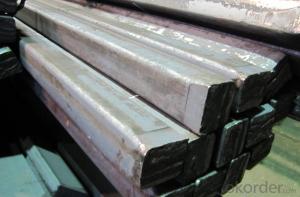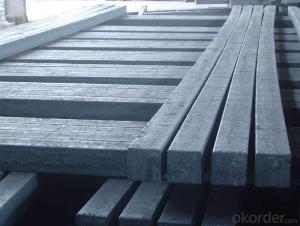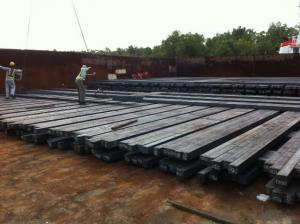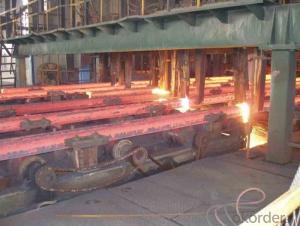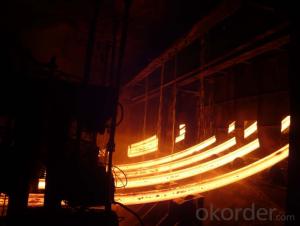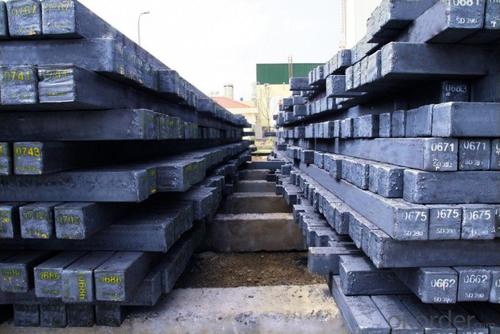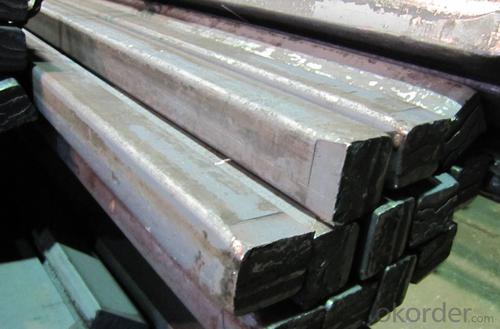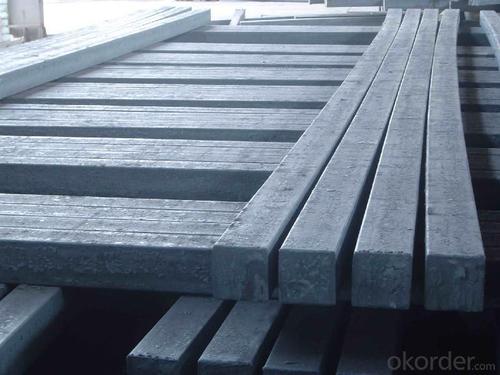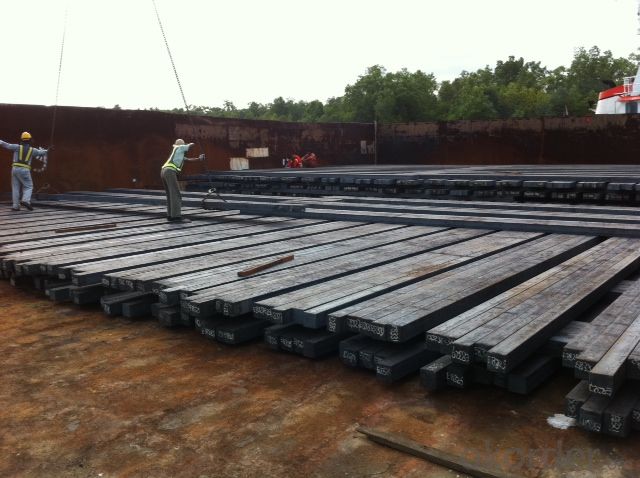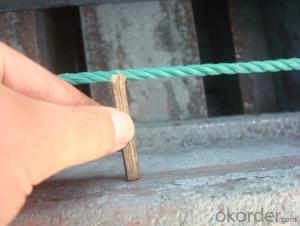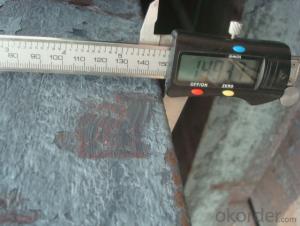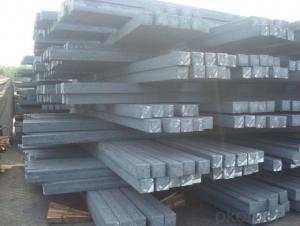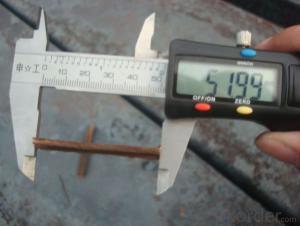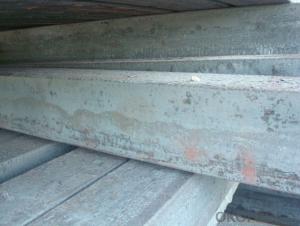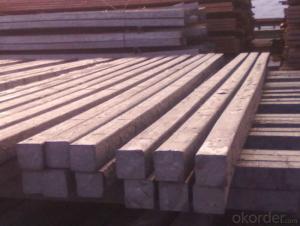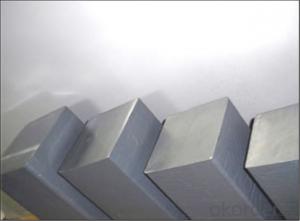Square Steel Billet Q235 3SP Grade Prime Quality 1#
- Loading Port:
- Tianjin
- Payment Terms:
- TT OR LC
- Min Order Qty:
- 2000 m.t
- Supply Capability:
- 50000 m.t/month
OKorder Service Pledge
OKorder Financial Service
You Might Also Like
Description of Square Steel Billet Q235 3SP Grade Prime Quality 1#
M. S. Billets are used for rolling of TMT Re-Bars of Fe415 and Fe500 Grade and various other structural steel products.
CRS Billets are used for rolling of CRS TMT Re-Bars.
Special Alloy Billets are used for rolling of any special grade TMT Re-Bars like Earthquake resistant TMT Re-Bars and for special grade structural steel products.
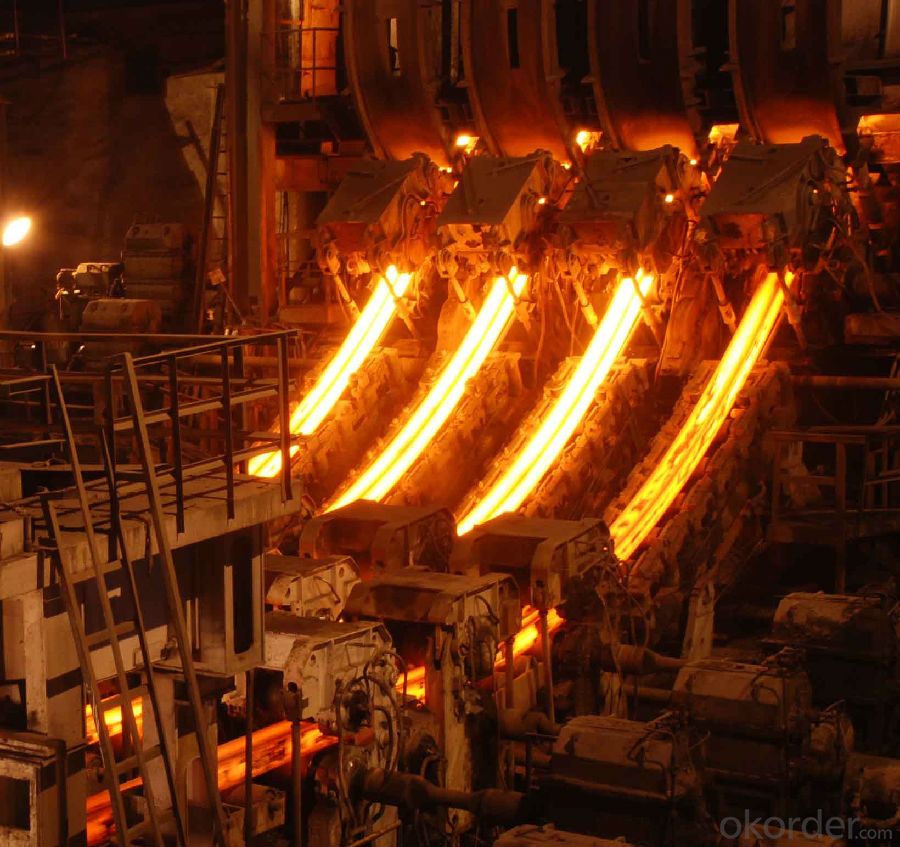
Main Feature Square Steel Billet Q235 3SP Grade Prime Quality 1#
Raw elements(C,Fe,Ni,Mn,Cr,Cu.)---Smelted ingots by AOD finery---hot rolled into black suface---pickling in acid liquid---cold drawn----polished by automatically machine--- cutting into pieces---checking quanlity
Applications of Square Steel Billet Q235 3SP Grade Prime Quality 1#
Widely Used in the areas such as Stainless Steel Fasteners, Chains, Kitchen and Sanitary wares, Furniture handles, Handrails, Electroplating and Electrolyzing pendants, Foods, Electron, Petroleum, Construction and Decoration, etc. Products have a high strength after cold-working. Electronic products parts, Medical appliance, Springs, Bus Inside and Outside packaging and building, Street Lamp Posts, etc. Decoration materials and Outdoor Publicity Billboard. Used for the products which have the Anti-Stress Corrosion requirement. Electron Products, Table-wares, Bolts, Nuts, Screen Meshes, Cumbustors and so on.
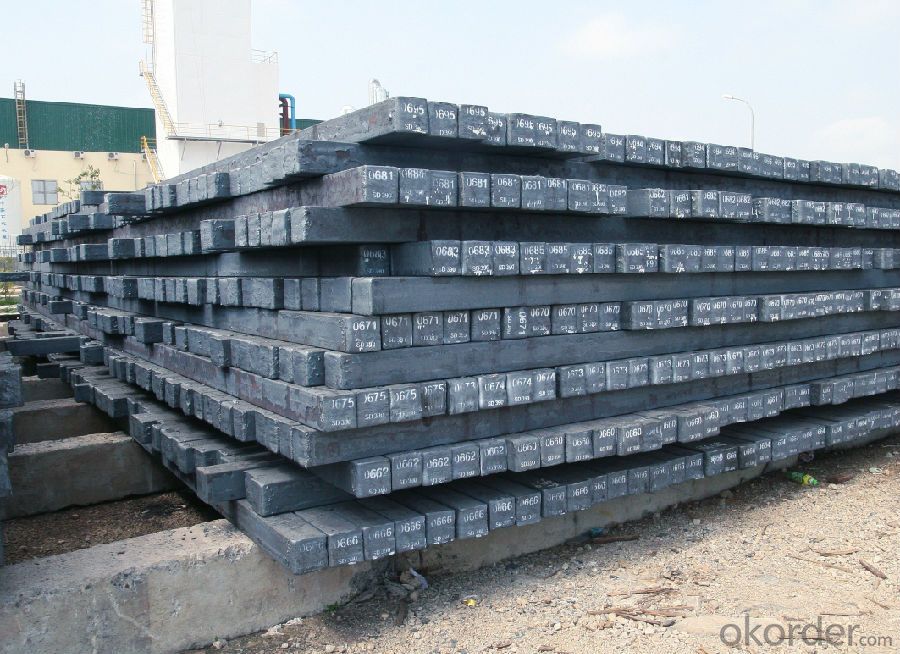
Specifications of Square Steel Billet Q235 3SP Grade Prime Quality 1#
| Standard | C(%) | Mn(%) | S(%) | P(%) | Si(%) |
| Q195 | ≤0.12 | ≤0.50 | ≤0.040 | ≤0.035 | ≤0.30 |
| Q235 | ≤0.20 | ≤1.40 | ≤0.045 | ≤0.045 | ≤0.35 |
| Q275 | ≤0.22 | ≤1.50 | ≤0.045 | ≤0.045 | ≤0.35 |
| 20MnSi | 0.17-0.25 | 1.2-1.6 | ≤ 0.050 | ≤ 0.050 | 0.40-0.80 |
| 3SP | 0.14-0.22 | 0.40-0.85 | ≤ 0.050 | ≤ 0.040 | 0.05-0.15 |
| 5SP | 0.28-0.37 | 0.50-1.00 | ≤ 0.050 | ≤ 0.040 | 0.15-0.30 |
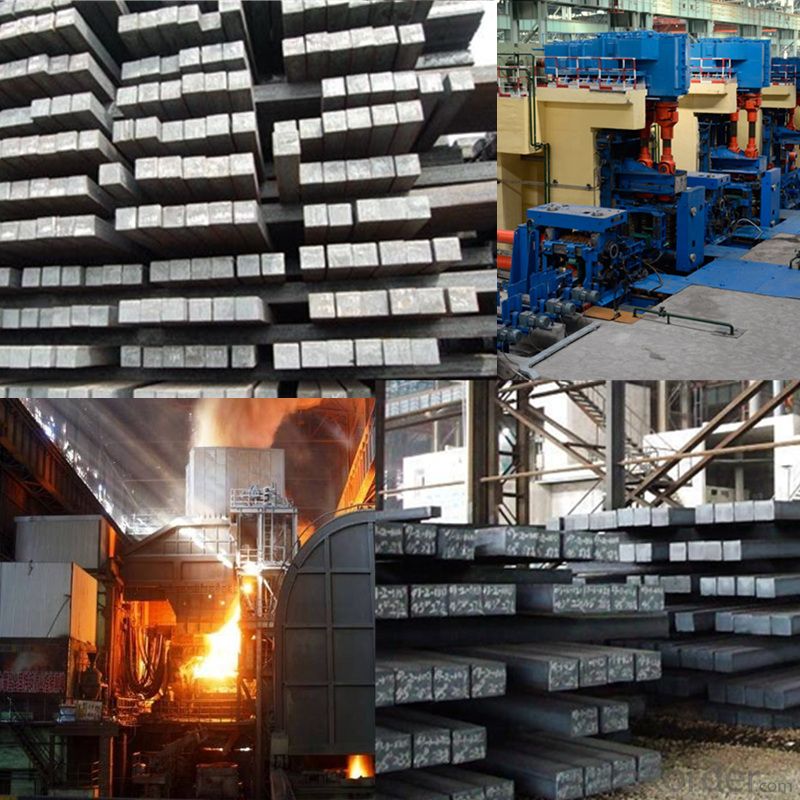
FAQ of Square Steel Billet Q235 3SP Grade Prime Quality 1#
We have organized several common questions for our clients,may help you sincerely:
1. How Can I Visit There?
Our company is located in Tianjin City, China, near Beijing. You can fly to Tianjin Airport Directly. All our clients, from home or aboard, are warmly welcome to visit us!
2. How Can I Get Some Sample?
We are honored to offer you sample.
3. Why choose CNBM?
Our delivery time about 15-20days for standard sizes, if you have other requirements like hardness, quanity and width ,it is about 20-40days. But don't worry we also try our best for the delivery time ,because time longer and our cost is higher.
- Q: What are the common defects in steel billets during hot rolling?
- During hot rolling, steel billets may experience certain defects that can affect the quality of the final product. Some common defects include: 1. Surface cracks: These are longitudinal cracks that occur on the surface of the billet. They can be caused by improper cooling, high rolling temperatures, or poor quality of the steel. Surface cracks can lead to weakened structural integrity and reduced product performance. 2. Internal cracks: These are cracks that occur within the billet, away from the surface. Internal cracks can be caused by inadequate billet heating, uneven temperature distribution, or improper rolling parameters. They can result in material failure or dimensional inconsistencies in the final product. 3. Surface defects: These can include scales, pits, or scars on the surface of the billet. They are often caused by poor billet preparation, inadequate scale removal, or improper rolling practices. Surface defects can affect the appearance and surface quality of the final product. 4. Lamination: Lamination defects occur when there are layers or planes of separation within the billet. They can be caused by impurities in the steel, improper billet preparation, or inadequate rolling parameters. Laminations can lead to reduced mechanical properties and structural integrity of the final product. 5. Warping: Warping defects occur when the billet undergoes uneven cooling or excessive rolling tensions. This can result in distortion or bending of the billet, leading to dimensional inconsistencies in the final product. 6. Inclusions: Inclusions are non-metallic particles or impurities that are trapped within the steel during the billet formation process. They can result in reduced mechanical properties, surface defects, or material failure in the final product. To minimize these defects, proper control of rolling parameters, billet preparation, and cooling processes is essential. Regular inspections and quality control measures should be implemented to identify and address any defects that may arise during hot rolling.
- Q: What are the different methods of steel billet surface grinding?
- There are several methods of steel billet surface grinding, including abrasive grinding, belt grinding, and centerless grinding.
- Q: What is the difference between hot-rolled and cold-rolled steel billets?
- Hot-rolled steel billets and cold-rolled steel billets are two types of steel that undergo different manufacturing processes, resulting in distinct characteristics and properties. When producing hot-rolled steel billets, the steel is heated to a high temperature and then rolled while still hot. This process allows for easy shaping and forming into various sizes and shapes. Additionally, hot-rolling creates a rough surface finish and a scaled outer layer due to exposure to high temperatures. Generally, hot-rolled steel billets have a larger grain structure, which can result in a less precise and uniform final product. However, they also possess improved mechanical properties, such as higher strength and toughness, making them suitable for applications where strength is important, but surface finish is not a priority. In contrast, cold-rolled steel billets are produced by cooling the steel to a low temperature and rolling it at room temperature. This process allows for tighter dimensional tolerances and a smoother surface finish compared to hot-rolled steel billets. Additionally, cold-rolling results in a more refined grain structure, which enhances the overall strength, hardness, and durability of the steel. Cold-rolled steel billets are commonly used in applications where precise dimensions, surface finish, and uniformity are required, such as in the automotive, construction, and appliance industries. To summarize, the main difference between hot-rolled and cold-rolled steel billets lies in the manufacturing processes and resulting properties. Hot-rolled steel billets are formed at high temperatures, resulting in a rough surface finish and larger grain structure. Cold-rolled steel billets, on the other hand, are formed at room temperature, leading to tighter dimensional tolerances, a smoother surface finish, and a more refined grain structure. The choice between hot-rolled and cold-rolled steel billets depends on specific requirements and applications, with hot-rolled steel billets being preferred for their superior strength and cold-rolled steel billets for their precise dimensions and surface finish.
- Q: What are the disadvantages of using steel billets?
- Various industries face several drawbacks when using steel billets. Firstly, the weight and bulkiness of steel billets make them challenging to handle and transport. Consequently, logistical hurdles and costs can escalate, particularly when moving large quantities of billets. Secondly, the manufacturing process of steel billets necessitates a substantial amount of energy and resources. This includes melting iron ore and various additives, resulting in significant energy consumption and carbon emissions. Consequently, steel billets are less environmentally friendly compared to alternative materials. Moreover, steel billets have limited flexibility in terms of shape and size. They typically begin as long, rectangular bars, which restricts their usefulness in industries that require intricate or complex shapes. Consequently, additional steps and expenses are required to transform the billets into desired forms. Additionally, steel billets pose a high risk of surface defects and internal flaws. During production, impurities and non-uniformities can arise, leading to cracks, inclusions, or segregations within the billets. These defects jeopardize the structural integrity and performance of the final product, potentially resulting in failures or safety hazards. Lastly, steel billets are prone to corrosion, especially in harsh or corrosive environments. This significantly shortens their lifespan and necessitates frequent maintenance or protective coatings to prevent deterioration. Over time, the costs associated with corrosion prevention and maintenance accumulate, reducing the cost-effectiveness of steel billets in certain applications. In conclusion, while steel billets are widely utilized for their strength and durability, it is crucial to consider their disadvantages in terms of weight, energy consumption, limited flexibility, potential defects, and susceptibility to corrosion when selecting the appropriate material for a specific application.
- Q: Are steel billets magnetic?
- Yes, steel billets are magnetic.
- Q: Are steel billets susceptible to corrosion?
- Steel billets can be affected by corrosion. Steel, which is mostly made up of iron and carbon, is prone to corrosion because of the presence of iron. When exposed to moisture and oxygen, a chemical reaction occurs on the surface of the steel, resulting in the formation of rust, also known as iron oxide. This corrosion weakens the structure of the steel and can eventually cause it to fail. To prevent corrosion, protective layers are often applied or anti-corrosion agents are used on steel billets. Common methods include galvanizing, where a layer of zinc is added, or coating the steel with paint or epoxy. Additionally, storing steel billets in dry environments and ensuring proper ventilation can help reduce the risk of corrosion. It's worth noting that the susceptibility to corrosion can also depend on the specific composition and grade of the steel used in the billets. Certain types of stainless steel, for example, contain additional elements such as chromium and nickel, which offer improved resistance to corrosion. However, even stainless steel can corrode under certain conditions, although at a slower rate compared to regular carbon steel. Regular inspection, maintenance, and appropriate corrosion prevention measures are essential in ensuring the long-lasting durability of steel billets.
- Q: Can steel billets be used in the production of automotive components?
- Indeed, it is possible to utilize steel billets in the manufacturing process of automotive components. Steel billets, considered as intermediary steel products, are commonly employed in the production of diverse steel goods, including automotive components. These billets can undergo further processing techniques such as rolling, forging, or other methods of manipulation to achieve the desired shape and size of the automotive component. The utilization of steel in automotive components is favored due to its remarkable strength, durability, and capacity to endure demanding operational conditions. Furthermore, the utilization of steel billets provides flexibility in the manufacturing process, as they can be customized to meet the specific design requirements and performance specifications of various automotive components.
- Q: How do steel billets contribute to the manufacturing of furniture and fixtures?
- Due to their unique properties, steel billets are indispensable in the production of furniture and fixtures. The strength and stability they offer are essential for constructing these items, providing a solid framework that can support their weight and load-bearing capacity. This ensures that the furniture and fixtures will remain functional for an extended period of time. Additionally, the malleability of steel billets allows for the creation of intricate designs and shapes, enhancing the aesthetic appeal of furniture and fixtures. Manufacturers can take advantage of this flexibility to produce a wide range of styles and patterns that cater to different consumer preferences and interior design themes. Moreover, steel billets can be easily welded, making them perfect for joining various components together during the manufacturing process. This welding capability ensures a seamless and secure construction, ultimately improving the overall quality and durability of the furniture and fixtures. Furthermore, steel billets possess corrosion-resistant properties, making them suitable for indoor and outdoor furniture and fixtures alike. This resistance to rust and decay guarantees that these items can withstand harsh environmental conditions, preserving their appearance and structural integrity over time. In conclusion, the role of steel billets in the manufacturing of furniture and fixtures cannot be overstated. Their strength, malleability, weldability, and corrosion resistance contribute to the durability, design flexibility, and longevity of these items, making them a preferred choice for both manufacturers and consumers.
- Q: What are the potential applications of steel billets in the telecommunications industry?
- The telecommunications industry benefits greatly from the wide range of potential applications offered by steel billets. A key application lies in the construction of telecommunication towers, where steel billets serve as the foundation for manufacturing the structural components. These components provide the necessary strength and durability to support the weight of antennas and other equipment. Moreover, steel billets play a vital role in the production of transmission line hardware, including pole line fittings, brackets, and clamps. These components are crucial for ensuring the stability and reliability of telecommunication lines during installation and maintenance. Furthermore, steel billets are essential in the manufacturing of enclosures, both underground and overhead, that protect telecommunication cables from external factors such as moisture, heat, and physical damage. This protection guarantees uninterrupted communication. In addition, steel billets are utilized in the production of telecommunication equipment cabinets and racks, which provide a secure and organized space for housing network equipment, such as servers, switches, and routers. The strength and rigidity of steel billets make them ideal for supporting heavy equipment and protecting against environmental hazards. Lastly, steel billets find application in the construction of telecommunication infrastructure, including base stations and equipment shelters. These structures require robust materials to withstand harsh weather conditions and provide a stable foundation for the installation of telecommunications equipment. In conclusion, the versatility and durability of steel billets make them ideal for various aspects of the telecommunications industry, from tower construction to cable enclosures and equipment cabinets. Steel billets provide the necessary support and protection for telecommunication infrastructure and equipment.
- Q: What are the main challenges in the handling of steel billets during production?
- The main challenges in handling steel billets during production include ensuring proper transportation and storage to prevent damage, maintaining consistent temperature and humidity conditions to avoid material distortion or degradation, and implementing efficient handling techniques to minimize product loss and maximize productivity. Additionally, handling heavy and bulky billets can pose risks to worker safety, demanding proper training and equipment to mitigate potential accidents.
Send your message to us
Square Steel Billet Q235 3SP Grade Prime Quality 1#
- Loading Port:
- Tianjin
- Payment Terms:
- TT OR LC
- Min Order Qty:
- 2000 m.t
- Supply Capability:
- 50000 m.t/month
OKorder Service Pledge
OKorder Financial Service
Similar products
Hot products
Hot Searches
Related keywords

